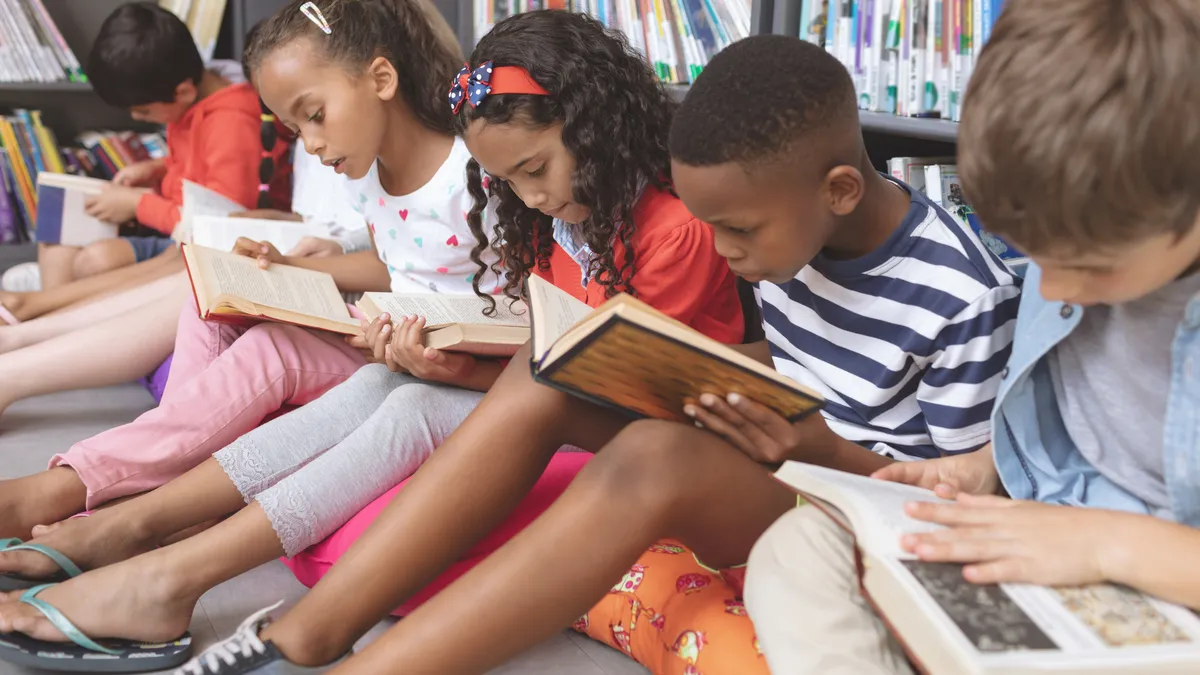As the U.S. enters another presidential election year, 14 states have “some media-literacy language on the books,” according to a new report detailing legislative efforts to integrate media literacy instruction into curriculum.
But “action is too slow compared to the urgent need,” wrote Erin McNeill, president and board member of Media Literacy Now, a nonprofit advocacy organization that defines media literacy as the “ability to access, analyze, evaluate, create and take action with all forms of communication.”
The report calls out Florida and Ohio as “advanced leaders” for requiring media literacy to be incorporated into the curriculum from K-12.
Media literacy, which includes news literacy, was first included in Florida’s English language arts standards in 2008, and then in 2013, stronger legislation passed requiring the topic to be integrated in all subject areas. Ohio’s law also requires media literacy instruction to be spread throughout the curriculum.
Texas is identified in the report as a “strong leader” for passing legislation last year that includes media literacy as part of its digital citizenship curriculum. While Media Literacy Now considers digital citizenship as part of media literacy — not the other way around — the authors still wrote the state’s policy shows “strong promise.”
New Mexico, where media literacy can be offered as an elective, and Washington, which is offering instructional resources and approved funding for teacher training, are named “developing leaders” in the report. Finally, nine states — California, Colorado, Connecticut, Illinois, Massachusetts, Minnesota, New Jersey, Rhode Island and Utah — are identified as “emerging leaders” for “beginning the conversation” and consulting with experts and others.
More states considering bills
Calls for increased attention to media literacy skills and demand from educators for training in this area increased following an outbreak of “fake news” reports associated with the 2016 presidential election. Studies and assessments showing students are easily misled by digital information have also contributed to a sense of urgency.
News and media literacy advocates, however, have noted because the topic can fit into multiple content areas, it can also be overlooked because of other pressures on teachers. Media literacy, the group notes, also “encompasses the foundational skills of digital citizenship and internet safety including the norms of appropriate, responsible, ethical, and healthy behavior, and cyberbullying prevention.”
But Natasha Casey, an associate professor of communications at Blackburn College in Carlinville, Illinois, said the definition includes some “slippery terms,” which can also affect how instruction is implemented.
“Who defines the norms, what is appropriate and responsible or ethical and healthy?” she asked. “These are not universally agreed upon within the field of media literacy, let alone beyond it.”
Still, Casey said the report is useful in providing a “snapshot” of legislative efforts. With state lawmakers just beginning to convene for this year’s sessions, it’s also likely more states will join the list. In Illinois, for example, schools are required to teach internet safety, but there is also pending legislation from last year that would create a media literacy task force “to assess the media habits of Illinois youth and create possible policies.”
Lawmakers in Missouri and South Carolina have also pre-filed versions of Media Literacy Now’s model bill, the report noted, and legislation is expected in Hawaii and Arizona.
Howard Schneider, dean of the School of Journalism at Stony Brook University in New York and founder of the school’s Center for News Literacy, agreed with the report that “progress is still way too slow” considering “well-documented deficits on the part of America's schoolchildren to identify fact from fiction, particularly on social media, or successfully engage with and analyze news reports.”
He noted lawmakers in New York “have not yet come to the conclusion that such competencies are a prerequisite for citizenship in the 21st [century], a minimum requirement for a high school diploma.”
Calls for more research on implementation
Along with legislative efforts, there has been some growth in the availability of professional learning programs and resources for teachers related to media and news literacy, such as the News Literacy Project and the Center for New Literacy’s summer academy.
But programs for pre-service teachers are still limited, Casey noted.
“This absolutely has to be addressed if we are going to have robust media literacy education programs in K-12 schools across the country,” she said.
In addition to urging lawmakers in more states to introduce media literacy education, McNeill recommended educators advocate for increased attention to the topic.
“More research must be done on how updated standards and regulations are contributing to improved media literacy education in each state,” she wrote. “and on how laws and standards are being implemented in schools across the country.”





















